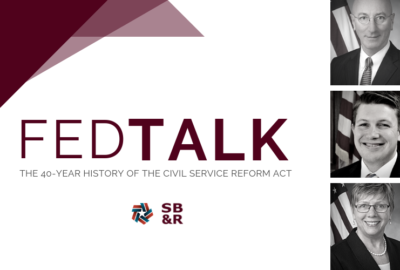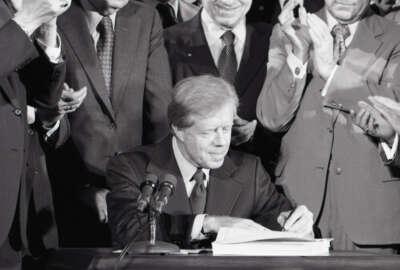
Surviving your boss’ midlife crisis
For many people age 40 seems to be the not-so-magic number. If you buy that, be advised that the Civil Service Reform Act is turning 40 this Saturday.
When did you have, or do you expect to have your midlife crisis? A 2011 British study said that many women feel “old” at 29 years old whereas men don’t get the wrinkle blues until around age 58.
For many people age 40 seems to be the not-so-magic number. If you buy that, be advised that the Carter administration’s Civil Service Reform Act, one of its biggest legislative wins, is turning 40 this Saturday. The most recognizable feature of the CSRA is the Senior Executive Service.
Whatever your job, wherever you work, your top career boss is a member of the SES, a professional corps which was designed to be the best of the best. So at age 40, how are the SES and your boss doing? Especially now.
In 1978 when “reform” kicked in, workers in grades 16, 17 and 18 were strongly encouraged to volunteer for the SES. Those who didn’t were told they weren’t going anywhere in their careers. Converting, however, meant more money, the promise of greater responsibility, accountability and mobility. The SES was supposed to create and represent the best of the best. Career employees would act as a bridge and buffer between outgoing and incoming administrations.
A go-to group of feds without political or ideological agendas would advise their temporary political bosses on how things work in government, and whose performance would be recognized and financially rewarded.
So how’s that, and the rest of the 40-year old reform working out in an era of draining the bureaucratic swamp? Just a couple of days ago the most recent director of the Office of Personnel Management — supposedly the keeper and defender of the federal merit system — was abruptly replaced by an official of the Office of Management and Budget who will now hold down two jobs.
The issue of where the civil service has been, is now, and where it’s heading will be the subject of today’s Your Turn radio show. My guests will be Kristine Simmons from the Partnership for Public Service, Thomas W. Ross from The Volcker Alliance and Bill Valdez, head of the Senior Executives Association. They’ll be talking about their new report which proposes some major changes which include:
- Setting executives up for success,
- Improving senior-level talent management, and
- Strengthening the link between political and career leadership.
Nice goals, but definitely a moving target in an administration where many political appointees distrust the career staff they inherited and where one cabinet officer said, ominously, that one–third of the career staff are “not saluting.” Which, whether he is right or wrong, doesn’t sound good.
The show starts at 10 a.m. EDT here on www.federalnewsnetwork.com or 1500 AM in the Washington area. If you have questions or comments shoot them to me at mcausey@federalnewsradio.com. We won’t use your name or agency if you want to remain anonymous.
Nearly Useless Factoid
By Amelia Brust
If you see a ribbon on a horse’s tail it might have a specific meaning. Red ribbons signify that the horse tends to kick. A green ribbon means that a horse is inexperienced and could misbehave or spook easily. A blue ribbon is for a stallion, while white ribbons signify that the horse is for sale.
Source: Oregon Horse Country
Copyright © 2025 Federal News Network. All rights reserved. This website is not intended for users located within the European Economic Area.
Mike Causey is senior correspondent for Federal News Network and writes his daily Federal Report column on federal employees’ pay, benefits and retirement.
Follow @mcauseyWFED





